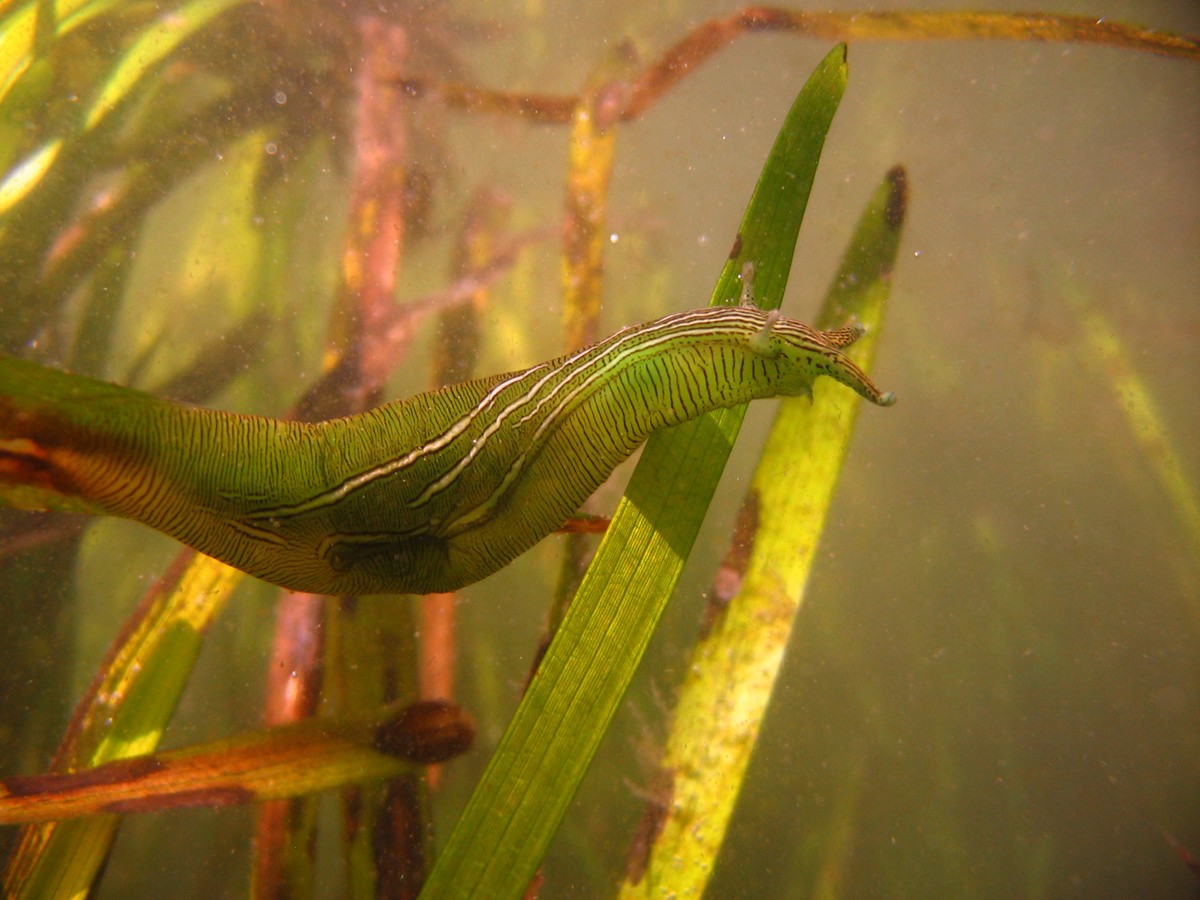Phyllaplysia taylori
Eine Art der Phyllaplysia Wissenschaftlicher Name : Phyllaplysia taylori Gattung : Phyllaplysia
Phyllaplysia taylori, Eine Art der Phyllaplysia
Botanische Bezeichnung: Phyllaplysia taylori
Gattung: Phyllaplysia
 Photo By Jennifer Stock / NOAA CBNMS , used under PUBLIC-DOMAIN /Cropped and compressed from original
Photo By Jennifer Stock / NOAA CBNMS , used under PUBLIC-DOMAIN /Cropped and compressed from original Beschreibung
Es wurden zwei Farbmorphs dieses Seehasen beobachtet, hellgrün und gelb, mit charakteristischen schwarzen und weißen Streifen (siehe Beeman 1970 für eine vollständigere Beschreibung). Dies ist eine eher primitive Art. Es hat einen vom Rücken abgeflachten Körper, ist gut getarnt und kommt fast ausschließlich auf Seegras, dem Yachthafen von Zostera, vor. Es weidet auf Epiphyten, die sich auf Zostera-Klingen ansiedeln - Schwämme und Kieselalgen.
* Haftungsausschluss: The judgment on toxicity and danger is for reference only. We DO NOT GUARANTEE any accuracy of such judgment. Therefore, you SHALL NOT rely on such judgment. It is IMPORTANT TO SEEK PROFESSIONAL ADVICE in advance when necessary.
Häufig gestellte Fragen
Welche Farbe hat der phyllaplysia taylori ?
Was isst phyllaplysia taylori

 Photo By Jennifer Stock / NOAA CBNMS , used under PUBLIC-DOMAIN /Cropped and compressed from original
Photo By Jennifer Stock / NOAA CBNMS , used under PUBLIC-DOMAIN /Cropped and compressed from original